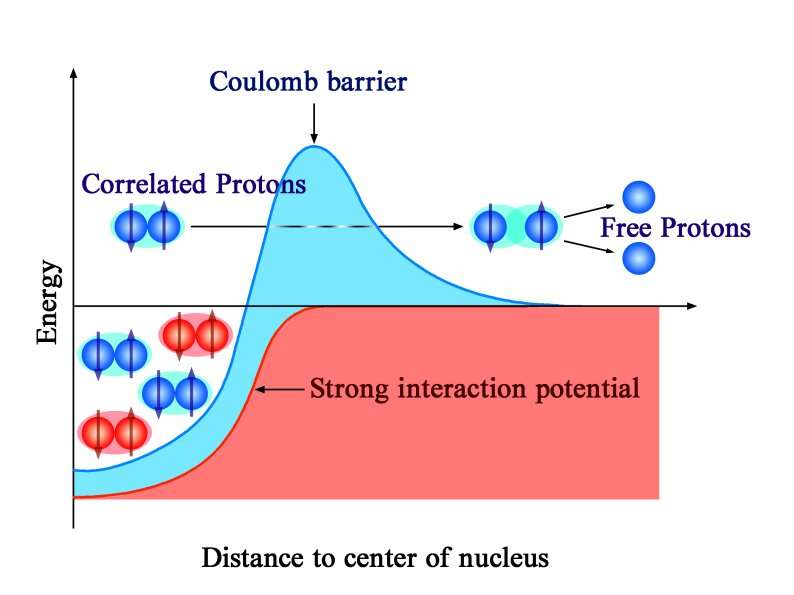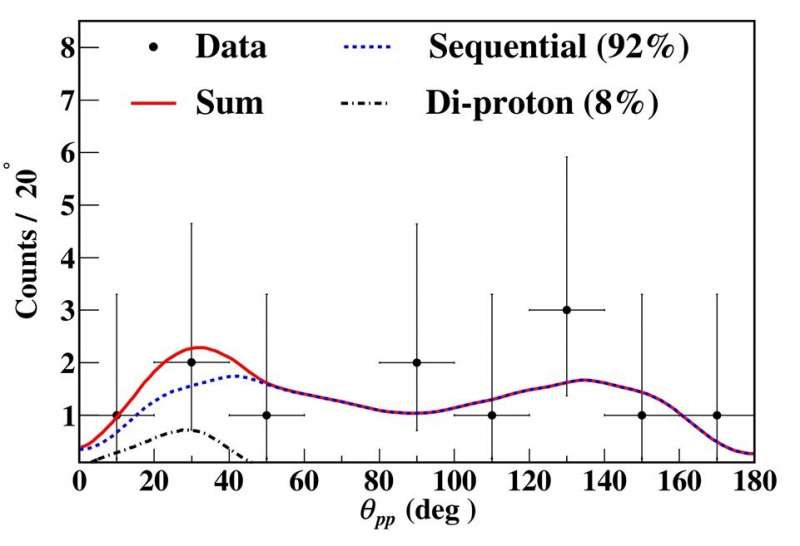
Two-proton decay is a quantum tunneling process. The tunneling probability depends on the available energy and the height of the Coulomb barrier, which in turn depends on the nuclear charge Z (number of protons). Two-proton emission is a typical three-body breakup process, including the daughter nucleus and two protons, in which pairing correlations play an important role. Therefore, a detailed study of two-proton emission is of great significance for exploring the open quantum system, pairing correlations and exotic nuclear structure.
Recently, researchers at the Institute of Modern Physics of the Chinese Academy of Sciences (CAS) and their collaborators carried out measurements for β-delayed two-proton emission (β2p) of the proton drip-line nucleus 27S at the National Laboratory of Heavy Ion Research Facility of Lanzhou (HIRFL). For the first time, they have measured the proton-proton angular correlations of 27S β2p.
Researchers developed a state-of-the-art detection array for β decay spectroscopy of nuclei far away from the valley of stability. This array consists of three double-sided silicon strip detectors, three quadrant silicon detectors and five Clover-type HPGe detectors at the Radioactive Ion Beam Line in Lanzhou (RIBLL1), which can be used to measure the energies, time and positions of the heavy ions and decay protons.
An energy peak at 6,372(15) keV with a branching ratio of 2.4(5)% was identified as a two-proton transition via the isobaric-analog state in 27P to the ground state of 25Al in the β decay of 27S. Two-proton angular correlations of 27S β2p were measured by the silicon array for the first time to study the mechanism of two-proton emission. Based on experimental results and Monte Carlo simulations, it was found that the main mechanism for the emission of β2p by 27S is of sequential nature.
The results were published in Physical Review C on June 15.

G. Z. Shi et al, β -delayed two-proton decay of S27 at the proton-drip line, Physical Review C (2021). DOI: 10.1103/PhysRevC.103.L061301
Citation:
Scientists present new measurements of β-delayed two-proton decay of 27S (2021, June 24)
retrieved 24 June 2021
from https://phys.org/news/2021-06-scientists-delayed-two-proton-27s.html
This document is subject to copyright. Apart from any fair dealing for the purpose of private study or research, no
part may be reproduced without the written permission. The content is provided for information purposes only.


